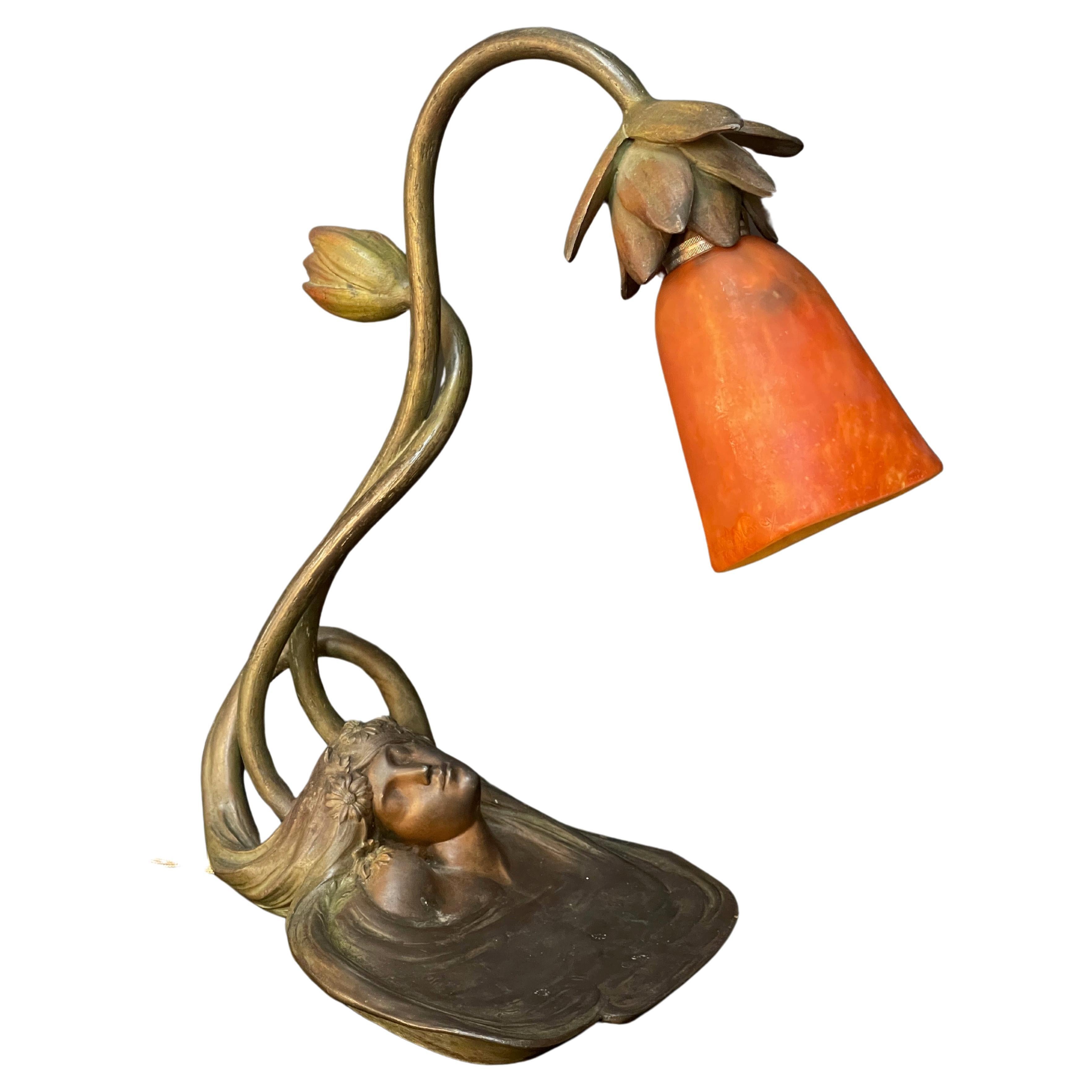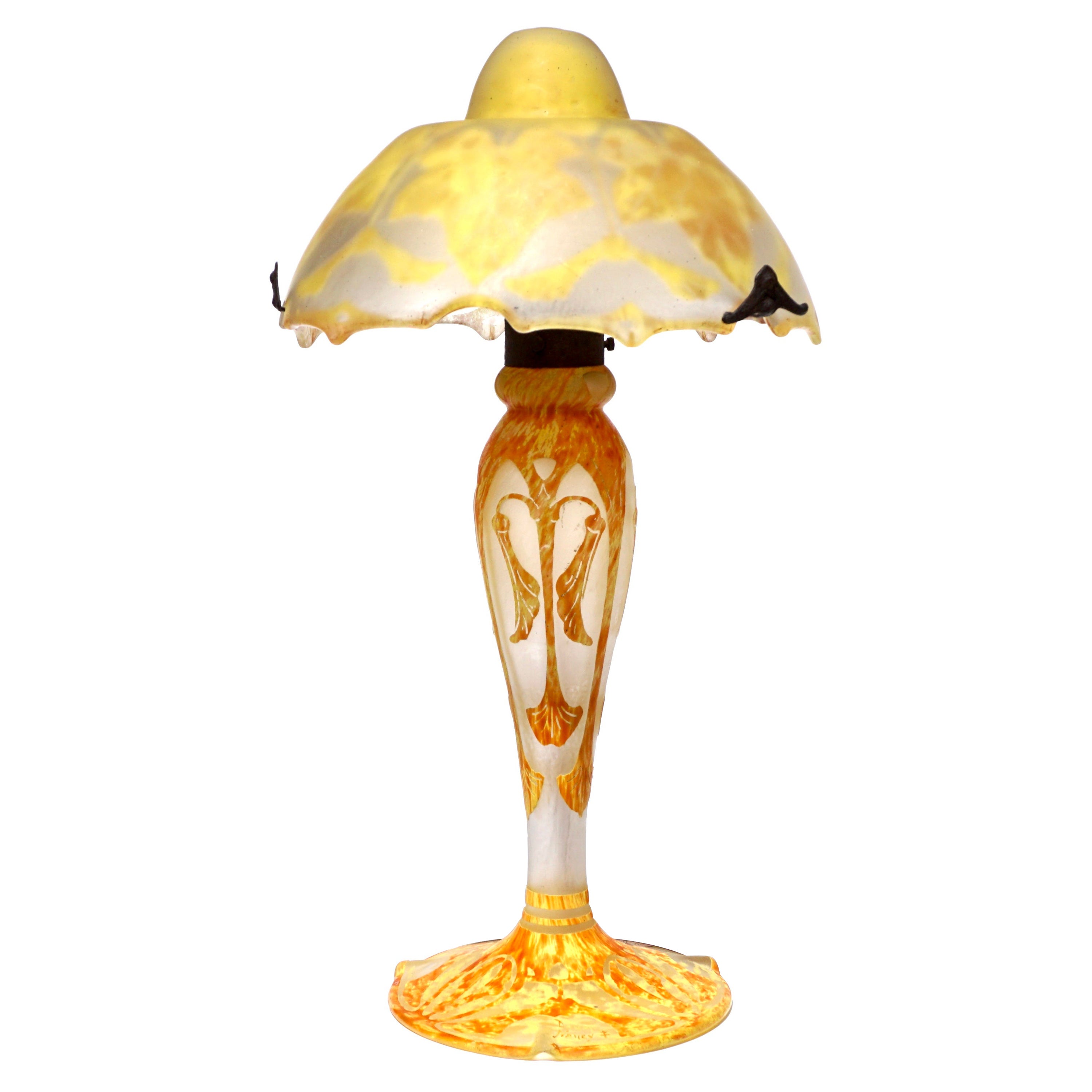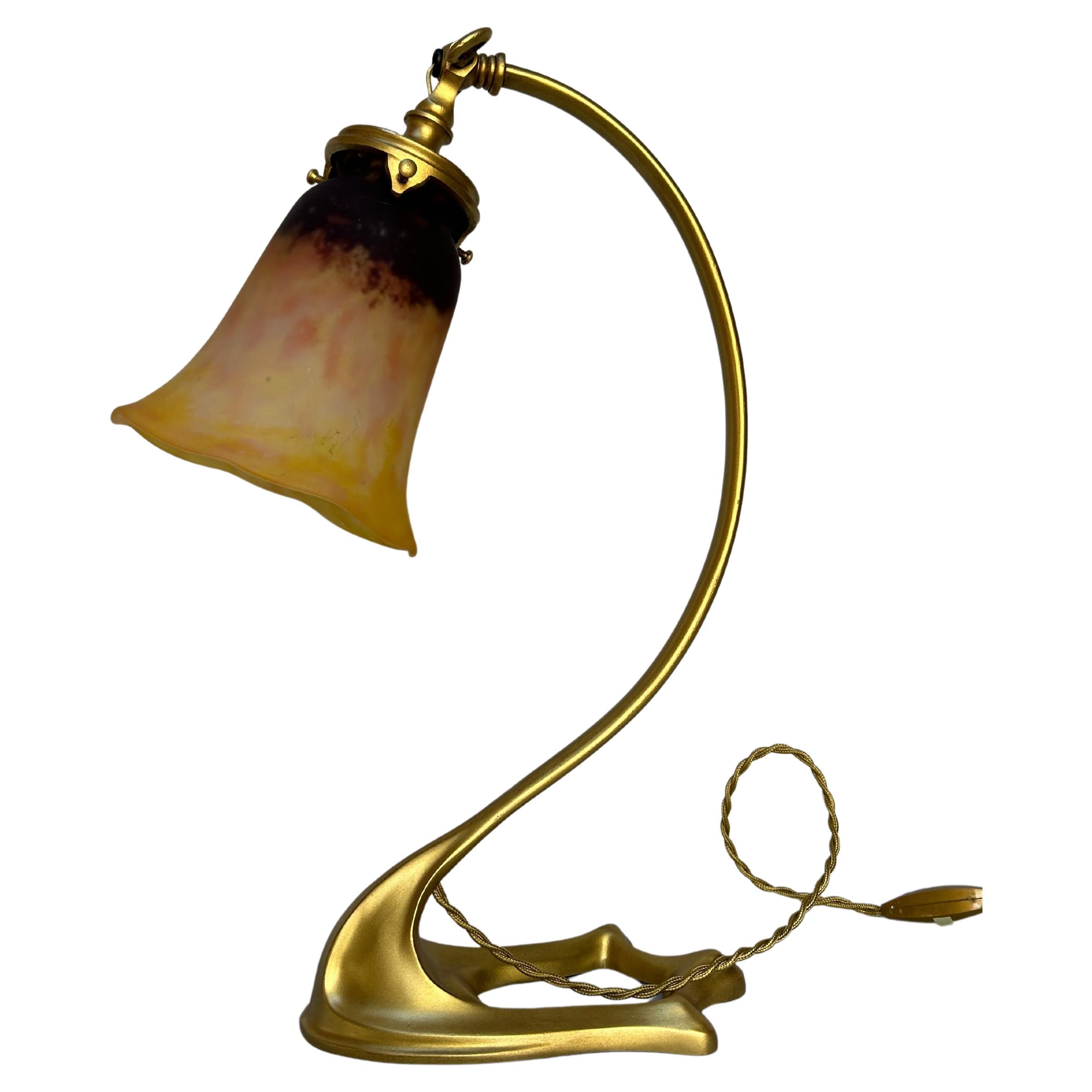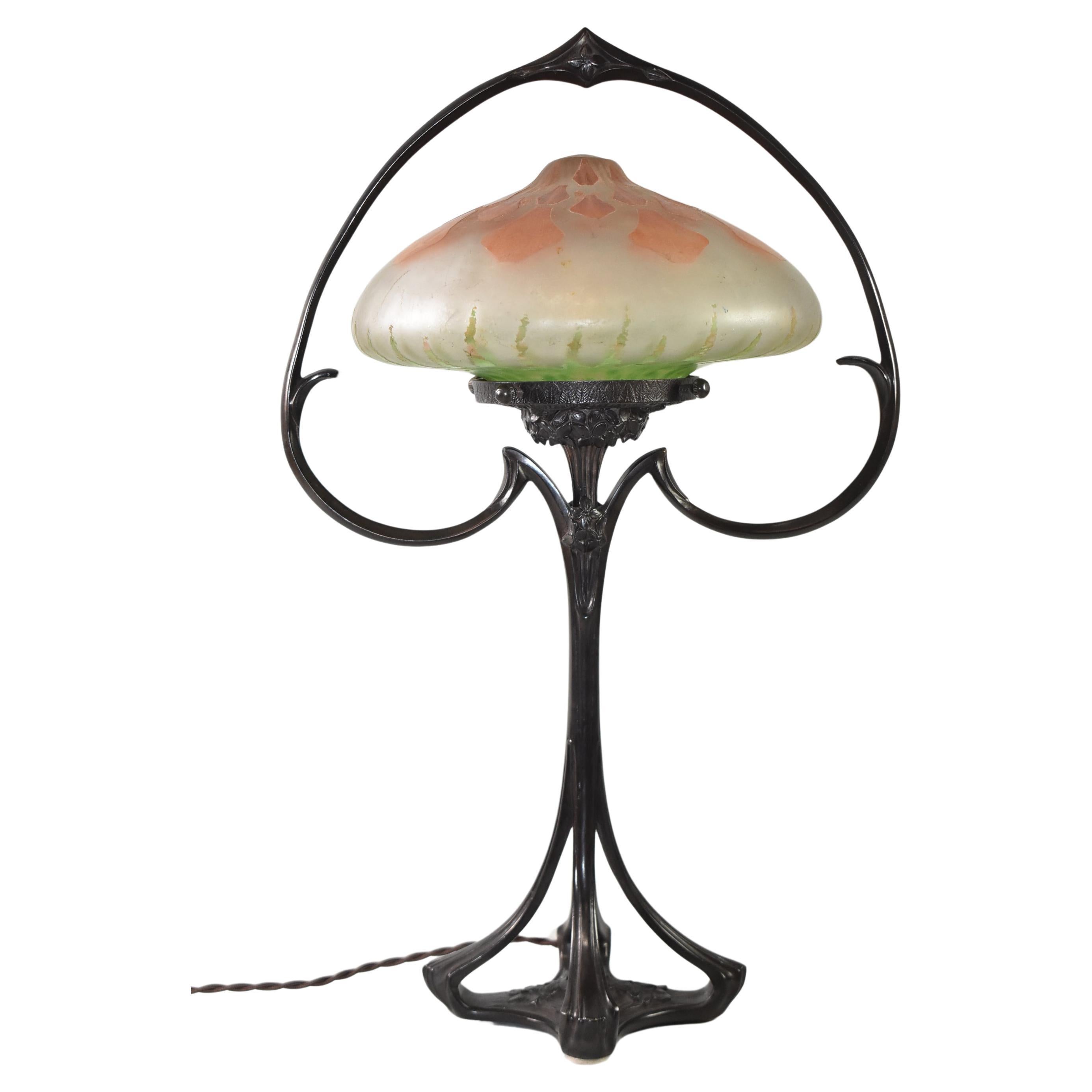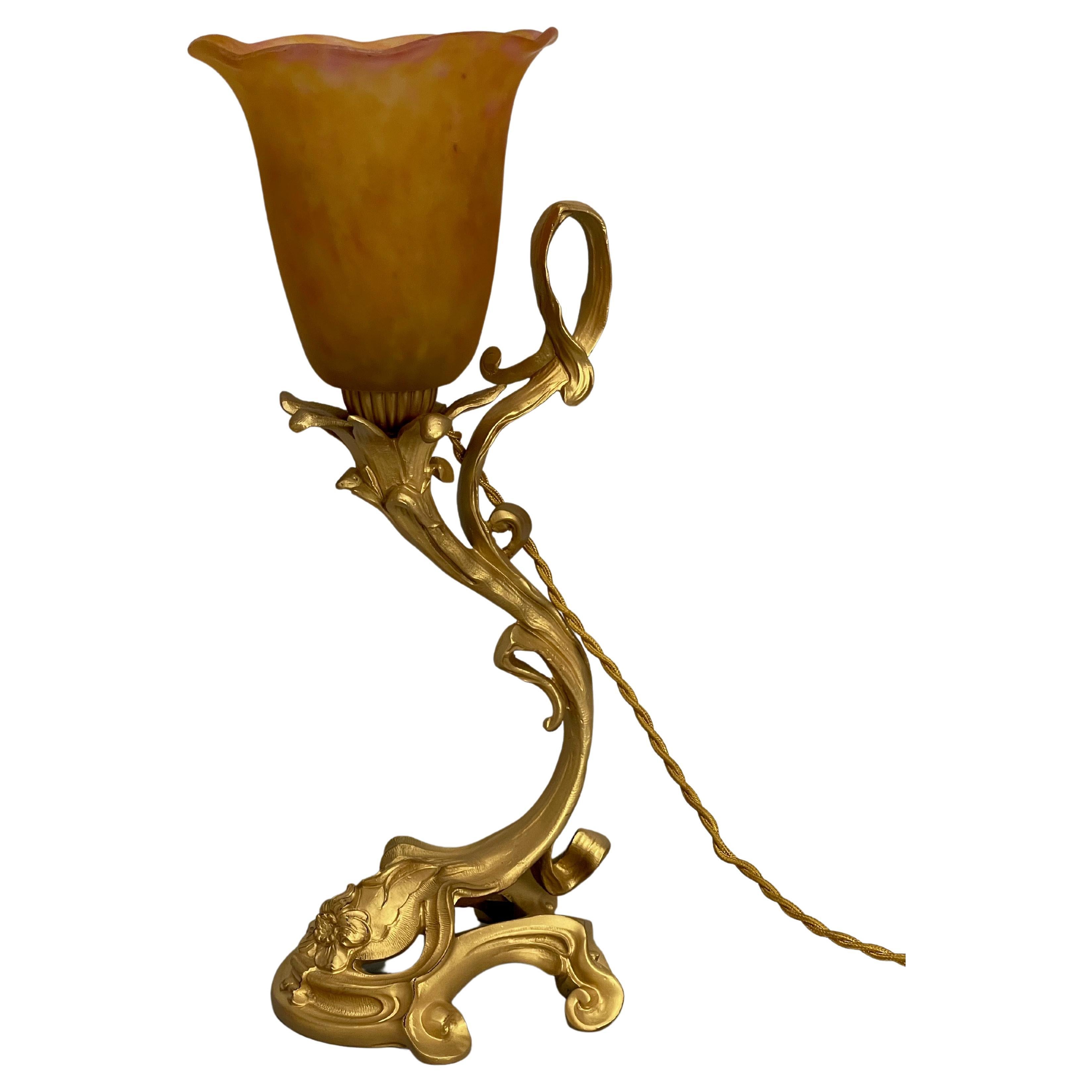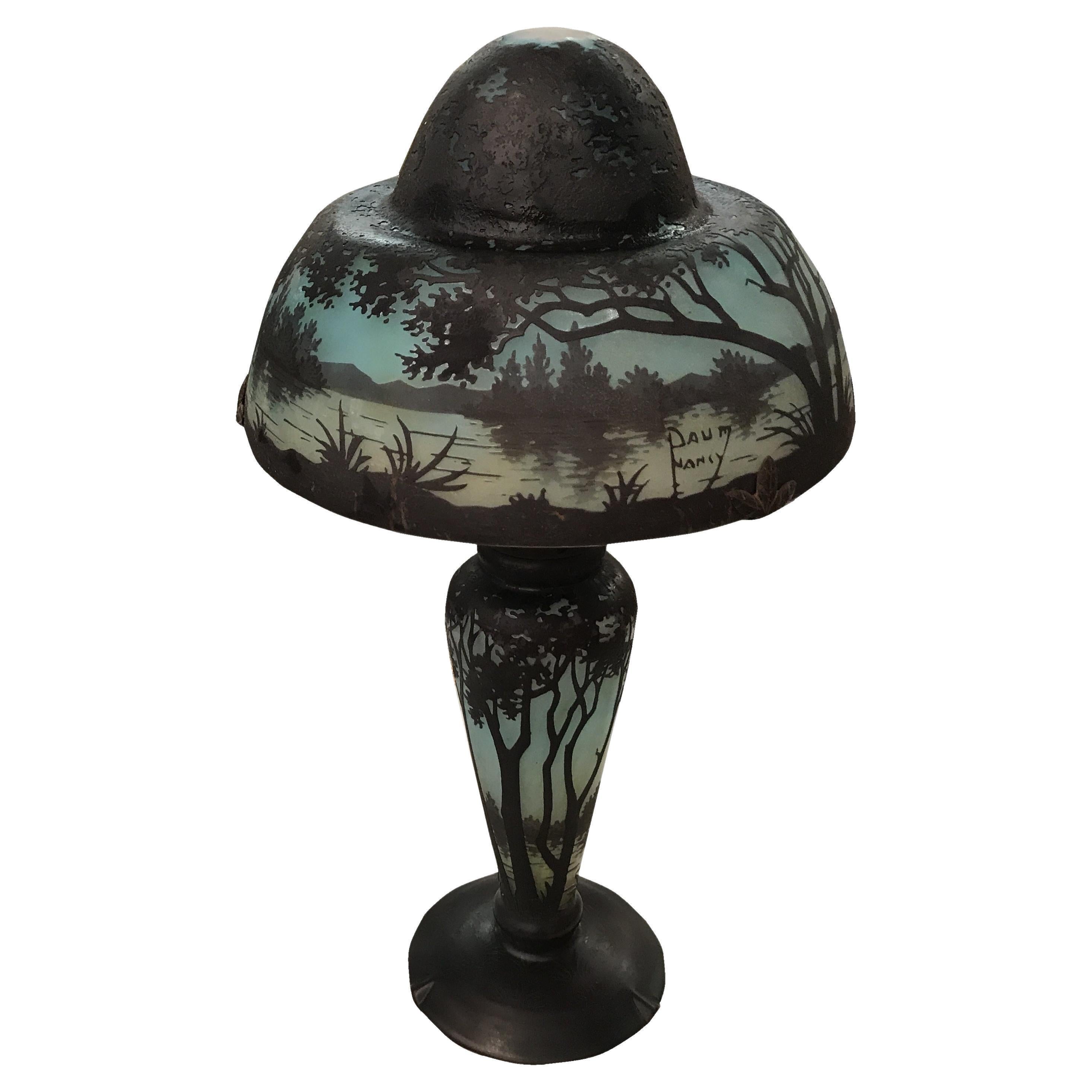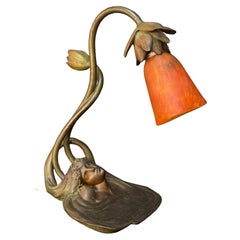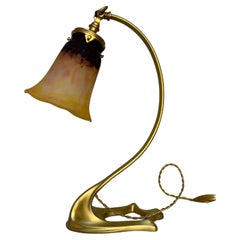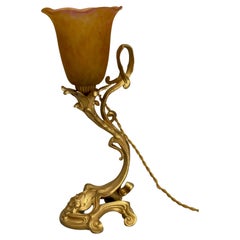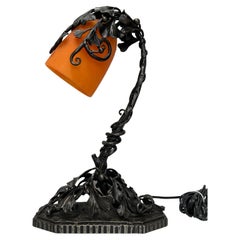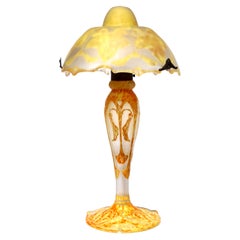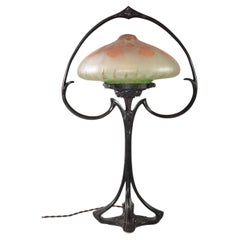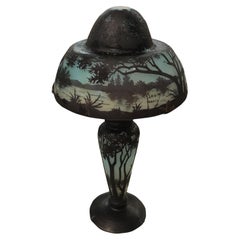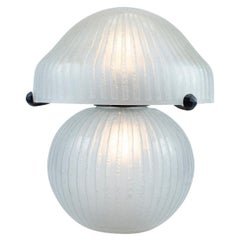Daum Nancy Art Nouveau Lamp
Angaben zum Objekt
- Schöpfer*in:Daum (Hersteller*in)
- Maße:Höhe: 40,5 cm (15,95 in)Breite: 30 cm (11,82 in)Tiefe: 21 cm (8,27 in)
- Stromquelle:fest verdrahtet
- Spannung:110-150v,220-240v
- Lampenschirm:Inbegriffen
- Stil:Art nouveau (Aus dem Zeitalter)
- Materialien und Methoden:
- Herkunftsort:
- Zeitalter:1910–1919
- Herstellungsjahr:1910
- Zustand:
- Anbieterstandort:NANTES, FR
- Referenznummer:1stDibs: LU7403245157052
Daum
Für Sammler ist Daum ein Name in der ersten Reihe der französischen Hersteller von Kunstglas, zusammen mit denen von Émile Gallé und René Lalique. Das in Nancy ansässige Unternehmen, das in den ersten Jahrzehnten von den Brüdern Auguste (1853-1909) und Antonin Daum (1864-1931) geleitet wurde, machte sich in der Zeit des Jugendstils einen Namen und übernahm später erfolgreich den Stil des Art déco .
Im Jahr 1878 übernahm der Rechtsanwalt Jean Daum den Besitz einer Glashütte als Bezahlung für eine Schuld und setzte seine Söhne als Eigentümer ein. Ursprünglich stellte Daum Glas für alltägliche Zwecke wie Fenster, Uhren und Geschirr her, aber der Erfolg, den Gallé auf der Weltausstellung 1889 in Paris - dem internationalen Schaufenster, für das der Eiffelturm gebaut wurde - hatte die Brüder Daum dazu inspiriert, mit der Herstellung von Kunstglas zu beginnen. Sie produzierten beliebte Werke aus Kameenglas, einer dekorativen Technik, bei der eine äußere Glasschicht mit Säure geätzt oder geschliffen wird, um die darunter liegende Schicht freizulegen. Daum wurde jedoch vor allem durch Gefäße und Skulpturen aus Pâte de Verre bekannt - einer sorgfältigen Methode, bei der fein gemahlenes farbiges Glas mit einem Bindemittel gemischt, in eine Form gegeben und dann in einem Ofen gebrannt wird.
Obwohl das frühe Daum-Glas nie von einzelnen Künstlern signiert wurde, beschäftigte die Firma einige der Meister des naturalistischen, asymmetrischen Jugendstils, darunter Jacques Grüber, Henri Bergé und Amalric Walter (dessen Vorname häufig falsch geschrieben wird). Daum arbeitete auch mit dem Designer von Möbeln und Metallwaren Louis Majorelle, zusammen, der schmiedeeiserne und messingfarbene Halterungen für Vasen und Tischlampen entwarf. In den 1960er Jahren beauftragte Daum bildende Künstler, vor allem Salvador Dalí und den Bildhauer César Baldaccini, mit der Gestaltung von Glasobjekten. Wie man an den auf 1stDibs angebotenen Werken sehen kann, hat Daum eine erstaunlich reiche Palette an kreativen Geistern beherbergt und ist heute ein staatliches Unternehmen, das Pâte de verre-Figuren herstellt.
- VersandAngebot wird abgerufen …Versand von: NANTES, Frankreich
- Rückgabebedingungen
Mehr von diesem*dieser Anbieter*in
Alle anzeigenFrühes 20. Jahrhundert, Französisch, Art nouveau, Tischlampen
Zink
Frühes 20. Jahrhundert, Französisch, Art nouveau, Tischlampen
Bronze
20. Jahrhundert, Französisch, Art nouveau, Tischlampen
Bronze
Vintage, 1920er, Art déco, Tischlampen
Schmiedeeisen
Mitte des 20. Jahrhunderts, Französisch, Art déco, Tischlampen
Schmiedeeisen
Frühes 20. Jahrhundert, Französisch, Art nouveau, Vasen
Glas
Das könnte Ihnen auch gefallen
Vintage, 1920er, Französisch, Art déco, Tischlampen
Glaskunst
Antik, Frühes 20. Jhdt., Französisch, Art nouveau, Tischlampen
Bronze
Antik, Frühes 20. Jhdt., Französisch, Art nouveau, Tischlampen
Glas
Vintage, 1930er, Französisch, Art déco, Tischlampen
Schmiedeeisen
Vintage, 1910er, Französisch, Art nouveau, Tischlampen
Glaskunst
20. Jahrhundert, Französisch, Art déco, Tischlampen
Glas
